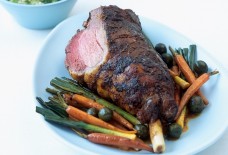From Beirut to Boston: The Utter Americanness of Khalil Gibran
This month, during the annual June wedding frenzy, thousands of officiants will echo the words of a little-known, oft-quoted, exotically-named poet. “Life without love is like a tree without blossoms or fruit,” happy couples will hear, validating their ardor. “And stand together, yet not too near together,” they will be counseled: “For the … oak tree and the cypress grow not in each other’s shadow.” The loved ones assembled—American weddings average 178 guests—will nod empathetically, moved by such dollops of New Age pop wisdom.
The author of these aphorisms and America’s best-selling poet by far—only outsold worldwide by the British playwright William Shakespeare and the Chinese philosopher Lao-Tze—Khalil Gibran arrived at Ellis Island from Lebanon 120 years ago on June 17, 1895. As a twelve-year-old, he was one of 33,289 immigrant children that year, and one of 3.4 million young immigrants from 1892 to 1954, constituting a remarkably peaceful, productive, and creative mass migration.
Approximately 40 percent of Americans today have ancestors who passed through Ellis Island then. Although he never became a U.S. citizen because of his love of Lebanon, Gibran became America’s brilliant bard of multicultural metaphysics. He and other Ellis Island alumni—Arabs and Jews, Russians and Poles, Germans and Italians—pioneered a unique, easy-listening, deeply-rooted culture of the uprooted that was surprisingly universal yet distinctly American.
Born in 1883, Gibran found refuge from Ottoman oppression with his mother and three siblings in a South Boston tenement. By September that year, he was mastering English, although he would remain connected to his Maronite Christian heritage, returning to Lebanon for four years of study in 1898. In America he flourished, thanks especially to a loyal patron and occasional lover, Mary Elizabeth Haskell. His mega-seller The Prophet, published in 1923, would appeal to Depression-era Americans craving uplift and welcoming this mystical, escapist Arabian mysticism amid the 1930s’ privations. By 1957, the book of riffs about love and marriage, freedom and work, clothing and food, had sold a million copies. In the 1960s, The Prophet would enjoy a second popular surge as a countercultural, anti-establishment, New Age Book of Proverbs. Some estimate that 100 million copies have now been sold.
Source: www.thedailybeast.com


